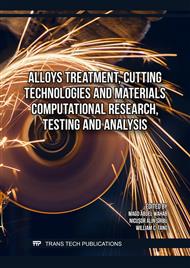p.49
p.59
p.73
p.81
p.93
p.107
p.119
p.129
p.141
Ai-Driven X-Ray Image Analysis for Enhanced NDT Performance
Abstract:
The increasing complexity of X-ray test data and the demand for precise, large-scale evaluations have exposed the limitations of manual flaw detection methods in Non-Destructive Testing (NDT). Traditional manual approaches, while widely used, are labor-intensive and prone to human error, often leading to inconsistencies and inefficiencies. An Artificial Intelligent driven (AI-driven) system has been developed to automate the analysis and evaluation of X-ray test data, improving both accuracy and efficiency. The system employs advanced image segmentation and classification algorithms, aligning with ISO standards to detect defects in welded structures. By reducing reliance on manual interpretation, the system enhances the reliability and speed of the evaluation process, while also allowing for expert oversight through manual corrections when necessary. Integration with a Laboratory Information Management System (LIMS) ensures streamlined data handling and traceability, minimizing human error in data recording. As the AI model processes more data, it continuously improves, adapting to evolving defect patterns and maintaining high performance. This paper details the system’s AI architecture, the methodology employed for X-ray image analysis, and the performance results from industrial applications, demonstrating how this technology addresses key challenges in NDT processes.
Info:
Periodical:
Pages:
119-127
Citation:
Online since:
November 2025
Price:
Сopyright:
© 2025 Trans Tech Publications Ltd. All Rights Reserved
Share:
Citation:


